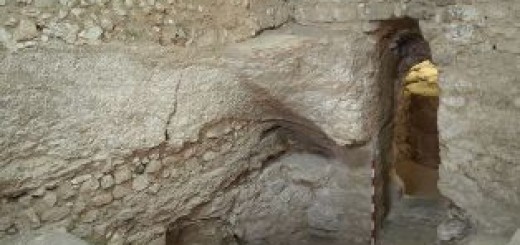Marthomma in Malabar coast

Varghese Pamplanil
(Had Apostle Thomas been to India? Irrespective of the Syro-Malabar claims that he landed in India in AD 52, scholars are still in search of proofs. According to Vatican records, Didymus Thomas would not have gone past Afghanistan. If Thomas was forty when Jesus met him, he should at least be seventy five when he landed at Kodungalloor, for there are proofs of his visits in many other places. If it was at Mylapore that he died, it should have been in his final phase that he visited India. Facts do not match history. Are we just clinging on to a second century historian’s comment that there  are communities in the southern part of India who claims to have been initiated into the religion by St. Thomas?
are communities in the southern part of India who claims to have been initiated into the religion by St. Thomas?
Shri Verghese Mathew, a voracious reader, is not sharing what he just feels. He is speaking on the basis of unchallenged proofs we have before us. Joseph Mattappally – asso. editor.)
The topic whether Marthomma came to India in CE 52 or thereabouts has been dealt with ad infinitum. Recently, a retired newspaper editor enquired of what do I know in the matter; hence this article.
A large segment of the Syro-Malabar Christians firmly believe that they are the decedents of Namboothiris (the highest caste among Hindus) who were baptised and converted to the Christian religion by no less a person than Apostle Thomas, who had been sent to the Malabar Coast by Jesus Christ with an explicit command, “Go and spread the ‘good news’ and baptise the Gentiles residing there, in the name of the ‘Father, Son and the Holy Spirit.” Why did Thomas wait for more than twenty years after the death of his teacher (Guru) in CE 28/29 till CE 50, to fulfil the mandate is an enigma unresolved?
The Jesus or Joshua (meaning Saviour) of Nazareth, could have been one of the many Messiahs, rebels revolutionaries, freedom fighters, prophets, preachers, social activities, healers, do gooders etc. in plenty in Galilee at the beginning of the Common Era (CE). He was most brutally ‘hanged on a tree,’ one among the thousands, the Romans routinely put to death most horribly, without any qualms. It appears that Jesus had no agenda other than liberating his people from the bondage of Rome and bring in an egalitarian society: the ‘Kingdom of God’. He belonged to the erstwhile ‘Galilee of Gentiles’ rough, guttural speaking, tenacious rebels and freedom fighters, who had been forcefully converted to Judaism by Alexander Jannaeus (BCE 102-76).
“Historians, who studied Christianity in the Malabar coast, surmise that it arrived by way of traders via the Arabian Sea from the Middle East, who travelled by sail boats emanating from Persian Gulf, with the aid of monsoon winds. Historians have suggested that the community was originally formed by the decedents of west Asian traders involved in the international pepper market and their local converts, since connections were maintained with west Asian Christian centres, in what is now Turkey and Iraq. Using Syriac as their language of worship, the Thomas Christians seem to have been in conversation with the doctrinal controversies and ecclesiastical divisions of Syrian community. Having had ties with the ‘East Syrian’ church, which adopted the Nestorian distinction between the divine and human persons of Christ, by the middle of the seventeenth century; Thomas Christians were linked to the ‘West Syrian’ or Jacobite church through the Patriarch of Antioch, which advocated the Monophysite understanding that the human and divine in Christ formed a single, indivisible person.” (Christianity – A Global History – Dr. David Chidster).
The Malabar Christians came under the suzerainty of the Church of Rome only in late sixteenth century at the behest of the King of Portugal. The Portuguese bishops engineered vertical split among the Malabar Christians in CE 1599 who had belonged to Eastern Orthodox Christianity, which earlier had been under the Patriarch of Constantinople since the Great Schism of 1054.
The close followers of Jesus had apparently deserted him, at the time of his trial and tribulation and death by crucifixion, to save their skins. They seems to have regrouped after a considerable elapse of time in Jerusalem under the leadership of James (the Just), brother of Jesus, along with Peter and John; organised a community of circumcised Jews adhering to the strict dietary laws of Judaism and waited for the ‘end times’ and the arrival of ‘Kingdom of God’ promised by their teacher and prophet, who was a Jew in his own manner.
Survival in a hostile environment would have been their sole priority, all things considered. With the martyrdom of James in CE 62, the destruction of the Temple in CE 70 and large scale massacre, enslavement, and deportation of the city’s inhabitants, the James’ group known as ‘Nazeranes’ or Ebionites disappeared from Jerusalem. A few of them engaged in the spices trade with Malabar could have escaped to the region from the atrocities of Rome. Some of their relatives or acquaintances could also have found sanctuary in the region. The fact that Syrian Christians call themselves as ‘Nazranis’ may be a pointer to their connection to the James’ group in Jerusalem. It is also possible that after the ruthless crushing of the final revolt of the Jews in CE 135 by the Romans, further influx from Israel to the Malabar coast could have occurred.
The Christianity of today is a religion conceived and propagated by Paul of Tarsus (in the present day Turkey), a hellenised diaspora Jew and a Roman citizen, maker of tents out of animal skins, for the Roman army. From the late 40s to the early 60s, Paul travelled through the Roman Empire and recruited ‘Gentiles’ as members of his new-found religion, which had nothing in common with the mission and message of Jesus. The original followers of Jesus had opposed the missionary activities of the self-styled ‘super apostle’, Paul. But superior organisational skill of Paul and his inherent advantage as a Roman citizen with the right of free movement in the Empire enabled him to smother and overwhelm the minuscule group of the original followers of Jesus. Pauline Christianity prevailed and prospered, while the Jesus movement petered out.
It is pertinent to note that in the Acts, written by Luke, an ardent supporter and admirer of Paul, a narrative heavily pro-Paul, there is no mention of deputing any Thomas for missionary work to spread the religion of his emanation based on the ‘Resurrected Christ’, leave alone converting and baptising any body outside his area of operation, viz. the Roman Empire. If Thomas had been deputed to make recruitment to Paul’s brand of Christianity, Luke would have taken note of it and included in the Acts. There is also little chance of Thomas searching for people who would be interested in joining the Jesus movement of James among non-Jews in far away lands. Incidentally, neither Jesus nor Paul undertake any baptism with water or otherwise.
The proposition that Thomas had travelled by the sea route for thousands of miles from his native Galilee or from Jerusalem in search of Gentiles with the aim of converting them to the Jesus movement in the far away Malabar would involve a gigantic flight of fancy. It is inconceivable that Thomas traversed the territory of Malabar and other wide geographical areas in India and outside, by foot or at best riding an animal, as if strolling in a garden. Thomas would have been a superhuman individual to travel and that too, two thousand years ago, hundreds of miles, crossing dangerous rivers, through thick tropical forests infested with predatory and ferocious wild animals to reach places such as Niranam and Nilakkal (the latter place is situated on the banks of difficult to cross Pamba river on the steep slope of the Western Ghats) from Kodungallur in search of high cast, non-existent that too, Brahmins (who did not exist in Kerala till the thirteenth century), in order to convert them and put them through the yet to be introduced ‘baptism’ so as to enrol them to a non-existent religion called Christianity and to establish, never even thought of ‘churches’, in the early half of the first century of the Common Era. Jesus would have to be out of his senses even to dream of instructing one of his followers to undertake such a mad mission? The claim that Thomas established seven churches spread across Malabar is the most preposterous proposition to make.
The concept of a public place of assembly for worship namely, the church, emerged even in the heartland of Christendom, only towards the end of the second century. Christians, a sometimes prosecuted lot, used to assemble in private houses in clandestine manner for their prayers. There should be a limit for hyperbole and exaggerated claims. Will anyone with a modicum of common sense go along with this improbability?
In the late sixth century, the Byzantine empire with its capital in Constantinople (now Istanbul) crumbled under a wave of attacks. Most important manuscripts were therefore kept hidden in the monastery of St. Catherine in the deserts of Sinai, which included the oldest extant copy of the New Testament and the manuscript of Acts of Thomas. According to the said Acts, Thomas was Jesus’ twin (the Syriac for Thomas- Te’oma- means, twin) as his Greek name ‘Didymos.’ Like his brother, he was believed to be a carpenter. Thomas is also known as the ‘Doubting Thomas,’ ‘Judas Thomas, the Twin’ as well. The Acts contain Gnostic elements, the earliest surviving version of the text was written in the fourth century Mesopotamia dated from at least two centuries after the events described therein.
In 1945, “several Egyptian fellahin, including Muhammad Ali, were riding their camels near the Jabal al-Tarif, a huge cliff that flanks the Nile River in Upper Egypt not far from the modern city of Nag Hammadi. They were looking for sabakh, a natural fertiliser that accumulates in the area, so they hobbled their camels at the foot of the Jabal al-Tarif and began to dig around a large boulder that had fallen onto the talus, or slope of debris against the cliff face. Much to their surprise, they uncovered a large storage jar with a bowl sealed on top of it as a lid. Muhammad Ali hesitated before opening the sealed jar. Apparently he feared that the jar could contain a jinn or spirit that might be released to haunt him and do mischief. Yet he also reflected upon legends concerning treasures hidden in the area, and his love for gold overcame his fear of jinn. He smashed the jar with his mattock, and he has explained it, a golden substance flew out of the jar and disappeared into the air. ……what he saw was neither a jinn nor gold, but rather papyrus fragments that were golden in colour and that glistened in the sun. For he had discovered the thirteen papyrus books (codices) of the Nag Hammadi library, and the Gospel of Thomas within the library..……
The text of the Nag Hammadi Gospel of Thomas is preserved in Coptic, the late form of the Egyptian language in use from the Roman period on. Presumably the Gospel was originally composed in Greek, though a minority of scholars propose Syriac or Aramaic for the composition…… the Gospel of Thomas is not fundamentally dependent upon the New Testament gospels, but that it preserves sayings that at times appear to be more original than the New Testament parallels.“ (The Gospel of Thomas -Marvin Mayer- Griset Professor of Bible and Christian Studies and Director of the Albert Schweitzer Institute at Chapman University, Orange, California).
Thus the Thomas, who was with Jesus of Nazareth would not have ventured out in search of the non-existent Namboothiris in Malabar about with the explicit purpose converting them to the then non-existent Christian religion. Most probably he spent his life in Egypt or thereabouts after his brother and teacher’s death.
Historical facts are not the concern for the diehard believer. Even when confronted with verifiable facts, the faithful refuses to think things through but continues to tenaciously cling to untenable chimera of ‘blind beliefs’.
Varghese Pamplanil
Mob. 9447152533.
Email: pamplanil@gmail.com
















